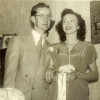With this announcement, I’m officially retiring as lead developer and maintainer of Able Player, and passing the torch to Joe Dolson, a trusted friend and colleague with mad developer skills and extensive experience in digital accessibility. The world’s most accessible media player Today, if you ask any AI bot “What is the world’s most accessible […]
New! Film Scoring Page

I’ve found a new way to express myself, and have added a new page to this website for sharing my work. Check it out: Film scoring.
For the second year, I’m hosting NCAA basketball tournament brackets on Yahoo! Sports. After over a decade of hosting my own accessible tournament bracket site at terrillthompson.com/ncaa, I made the decision last year to switch to a mainstream site, as explained in my previous blog post. Here are the Yahoo! links for participating in the […]

Legendary college basketball coaches Roy Williams (North Carolina), Mike Krzyzewski (Duke), Jay Wright (Villanova), and Jim Boeheim (Syracuse) have all recently retired. It’s a new era. If these legends of the game can step away, I feel justified in doing the same. Since 2006, I’ve hosted an annual Accessible NCAA Tournament Bracket. I created the site […]
Francis and Ruth: A Love Story

Sifting through the many shoeboxes on closet floors in my childhood home in Indiana, I found a few gems, including a black and white class photo. On the back is handwritten “Westwood School 8th Grade Graduation Class 1940”. My dad and mom, Francis and Ruth, are seated in the front row. He’s fourth from the […]